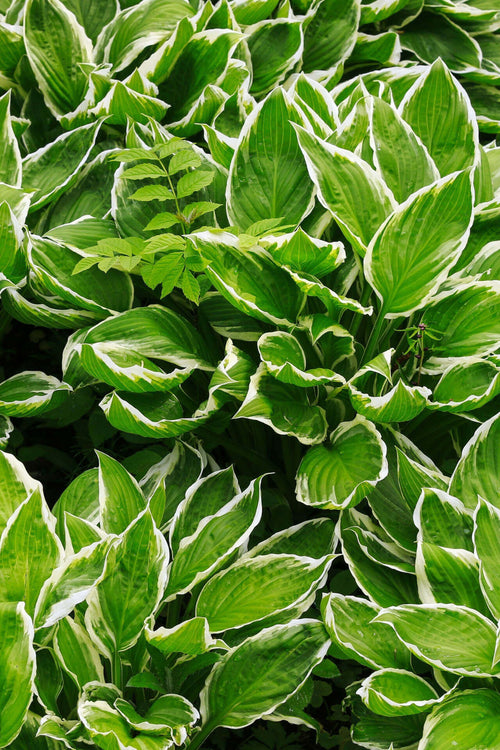The Hosta plant, renowned for its captivating foliage and adaptability, has become a beloved staple in gardens worldwide. With its lush leaves and versatility in various garden settings, the Hosta plant stands as a testament to the wonders of nature's artistry. In exploring the Hosta, we delve into its characteristics, cultivation, and enduring appeal as a hardy perennial that adds elegance and charm to shade and sunlit landscapes.
Characteristics and Attributes The Hosta plant, a member of the Asparagaceae family, offers a range of characteristics that make it a sought-after addition to gardens: Foliage: Hosta's foliage steals the spotlight with its wide range of colors, shapes, and sizes. Leaves can be heart-shaped, lance-shaped, or even elongated ovals. Colors span the spectrum from deep greens to vibrant yellows, blues, and variegated patterns.
Growth Habit: Hosta's typically grow in clumps, forming mounds of foliage that add depth and texture to garden beds. Depending on the variety, mature plants can range from a compact 6 inches (15 cm) to a striking 4 feet (120 cm) in diameter. Flowers: While Hosta's are celebrated for their foliage, they also produce elegant flowers that bloom in late spring to summer. These flowers often appear on tall scrapes that rise above the foliage, adding a layer of visual interest.
Light Requirements: Hosta's are known for their adaptability to different light conditions. While they generally thrive in partial to full shade, some varieties can tolerate more sunlight, especially with ample moisture. Soil Preference: Hosta's prefer well-draining, slightly acidic to neutral soil. Amending the soil with organic matter enhances its growth and overall health.
Cultivation Tips Cultivating Hosta plants requires attention to certain care practices to ensure their optimal growth and beauty: Planting: Plant Hosta's in spring or fall, giving them time to establish their root systems before extreme temperatures set in. Space them according to their mature size to avoid overcrowding.
Watering: Hosta's appreciate consistent moisture, especially during their active growing season. Avoid overwatering, which can lead to root rot, and provide mulch to retain soil moisture.
Fertilization: Applying a balanced, slow-release fertilizer in early spring helps provide the necessary nutrients for healthy foliage and flower development.
Pest Management: Monitor for common pests like slugs and snails drawn to the lush foliage. Implement measures like handpicking or using organic pest control methods.
Division: Consider dividing mature Hosta plants every few years to rejuvenate and maintain vitality. The division also allows you to propagate new plants.
Enduring Appeal The Hosta's enduring popularity lies in its ability to transform gardens with its unique attributes:
Versatility: Hosta's are versatile additions to various garden styles, from formal landscapes to woodland gardens and container displays. Shade Gardens: Hosta's shine in shade gardens, where their foliage adds layers of texture and color to areas that might otherwise lack vibrancy.
Focal Points: Larger Hosta varieties can serve as striking focal points in garden beds, drawing the eye and creating visual interest.
Border Planting: Compact Hosta varieties work well as border plants, neatly framing other garden elements with foliage.
Urban Gardens: Even in urban settings with limited space, container-grown Hosta's can bring a touch of nature to balconies and small patios.
Cultural Significance The Hosta plant has also found its way into cultural traditions: Japan: In Japan, the Hosta is known as Giboshi and is often featured in traditional gardens, valued for its elegance and symbolism.
Gardening Awards: Hosta enthusiasts and breeders have led to the development of thousands of unique cultivars, some of which have received prestigious awards for their outstanding qualities.
Conclusion
The Hosta plant's enduring popularity is a testament to its remarkable beauty, adaptability, and capacity to enhance various garden settings. From its captivating foliage to its resilience in different light conditions, the Hosta is a testament to nature's ability to create living works of art. Whether gracing shaded corners, forming lush borders, or taking center stage as focal points, Hosta's enrich gardens with elegance and charm. Their ability to thrive and flourish while adding visual appeal cements their place as a hardy perennial that continues to captivate gardeners and enthusiasts alike



















































